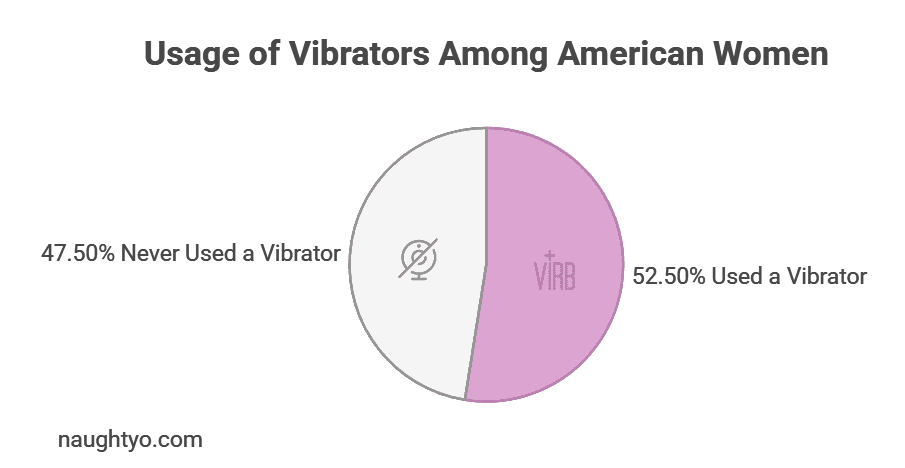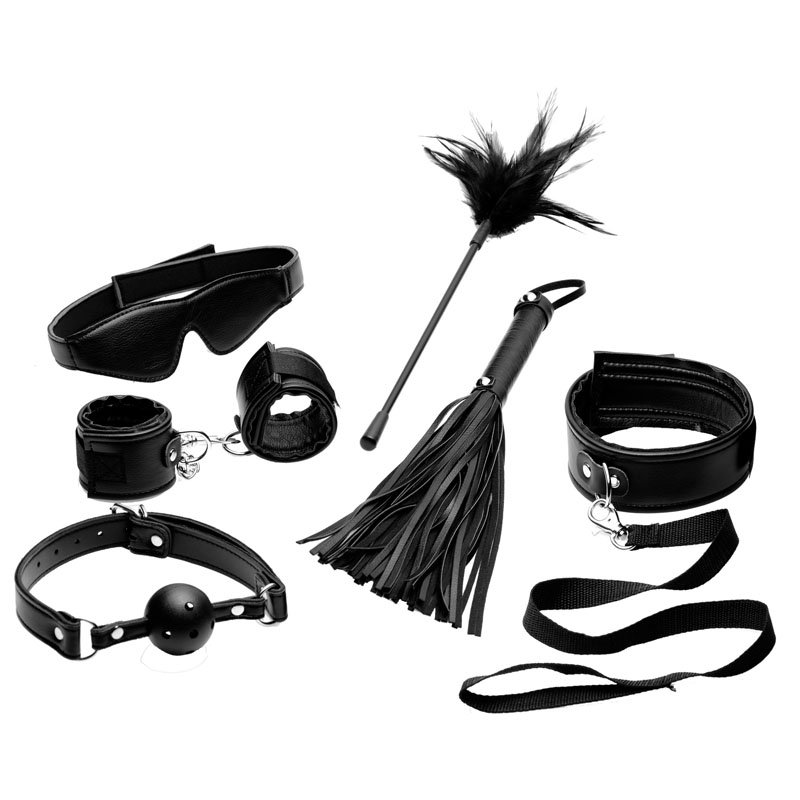Beginner’s Guide to BDSM: 12 Essential Steps
Beginner’s Guide to BDSM: 12 Essential Steps
Welcome to BDSM! If you’re curious about power dynamics, sensory play, and consensual kink, you’re in the right place. This guide will help you explore BDSM safely and responsibly. Whether you’re new or have some experience, you’ll find useful tips to enhance your BDSM journey.
| Key Takeaways |
|---|
| – BDSM is about consensual power exchange and exploration – Communication and trust are fundamental to BDSM practices – Establish clear boundaries and use safe words – Start slow and prioritize safety at all times – Explore different roles and activities to find what suits you – Continue learning and engaging with the BDSM community |
1. Understanding BDSM Basics
BDSM stands for Bondage, Discipline, Dominance, Submission, Sadism, and Masochism. It’s about consensual power exchange and exploring different forms of physical and psychological stimulation. Everything in BDSM is done with full consent and mutual enjoyment. It covers a wide range of activities, from light bondage to more intense power dynamics.
BDSM is not about abuse. It’s a way for adults to explore their desires safely and respectfully. Communication and trust are crucial in BDSM. These help create a safe space where partners can express their desires, set boundaries, and explore fantasies without fear.
2. Establishing Clear Boundaries and Safe Words
Before trying BDSM, set clear boundaries with your partner. Talk about what you’re comfortable with, what’s off-limits, and any worries you have. Have these talks when you’re not in a sexual situation so you can think clearly.
A safe word is a word that stops all activity immediately. Many people use the traffic light system:
- Green: Everything’s good, keep going
- Yellow: Slow down or check in
- Red: Stop everything immediately
Using a safe word isn’t weak. It’s a tool to keep everyone safe and respected. Some couples also use non-verbal signals, like dropping an object, which can be useful if speaking is hard.
3. Essential BDSM Safety Guidelines
Safety should always come first in BDSM. Here are some important rules:
- Never play when drunk or high
- Start slow and build up intensity over time
- Keep safety scissors nearby when using restraints
- Check in with your partner often during play
- Practice proper aftercare
- Learn how to use BDSM equipment correctly
- Know the risks of different BDSM practices and be careful
Exploring BDSM with someone you trust can make your relationship closer. Always put each other’s well-being first. Learn about the specific activities you want to try, as some might need extra safety steps.
4. Exploring Different Roles: Dominant, Submissive, and Switch
In BDSM, there are usually three main roles:
- Dominant (Dom/Domme): The person who takes control during play
- Submissive (Sub): The person who gives up control
- Switch: Someone who enjoys both dominant and submissive roles
These roles can change. You might like one role most of the time but sometimes enjoy switching. Find what feels right for you and your partner. Some people strongly prefer one role, while others like switching.
Trying these roles can help you learn about yourself. It’s okay to experiment and change your mind as you figure out what you like. Remember, in BDSM, the submissive partner can always stop or change the activity if they need to.
5. Starting with Light Bondage: Beginner-Friendly Restraints
Bondage involves tying up your partner. For beginners, start with soft, easy-to-remove restraints. The Interlace Bed Restraint Set is great for beginners. It’s safer and easier than rope bondage, which needs more skill.
This kit fits any mattress and has comfortable cuffs. It’s perfect for safely trying light bondage. Make sure restraints aren’t too tight – you should be able to fit two fingers between the restraint and skin. Keep safety scissors close and check often that your partner is comfortable.
As you get more comfortable, you can try other restraints like silk scarves or special bondage rope. But make sure you learn proper techniques and safety first before trying more complex bondage.
6. Sensory Play: Exploring Touch and Sensation
Sensory play involves changing or removing senses to increase pleasure. This can include:
- Blindfolds to remove sight
- Feathers or silk for gentle touch
- Ice cubes or warm oils for temperature play
- Earplugs to focus on physical sensations
- Scented candles for smell
- Flavored lubricants for taste
Always talk to your partner during sensory play to make sure they’re comfortable and enjoying it. Start gentle and slowly increase intensity based on how your partner reacts. Be aware of any allergies, especially when using new items.
Sensory play can help build trust and closeness. It can also help you find new sensitive spots you didn’t know about before.
7. Introduction to Impact Play: Spanking and Light Flogging
Impact play means hitting the body for pleasure. Beginners should start with light spanking using their hand or a soft tool. The Tame Me 8-Piece Beginner Bondage Set includes a soft flogger that’s good for beginners. This set has different tools to safely try various sensations.
Always start gently and increase intensity based on your partner’s feedback. Avoid hitting sensitive areas like the kidneys, spine, or head. Focus on fleshy areas like the buttocks or upper thighs. Learn proper technique to avoid injury – consider watching educational videos on safe impact play.
Remember that impact play can leave marks or bruises, even with light play. Talk about this with your partner first and agree on what’s okay. Always have a first aid kit ready and know how to care for any marks.
8. Exploring Power Exchange: Dominance and Submission
Power exchange is a big part of many BDSM relationships. One partner (the Dominant) takes control, while the other (the submissive) gives up control. The submissive actually has the real power because they set the limits and can stop things at any time.
Power exchange can be physical (like tying someone up), mental (like role-play), or both. Find what’s exciting for both partners. This might include:
- Giving and following orders
- Making rules for the submissive to follow
- Using special titles
- Doing service activities
- Using rewards and punishments (that both agree on)
Remember, power exchange must always be agreed upon. Dominants need to use their control responsibly and care for the submissive’s well-being. Submissives should feel free to speak up about their needs and limits.
Some couples do power exchange all the time, but beginners should start with short scenes and slowly explore more if they want to.
9. Communication Techniques for BDSM Play
Clear, open talking is very important in BDSM. Here are some tips:
- Talk about boundaries, desires, and worries before playing:
- Use BDSM checklists to find what you like and don’t like
- Share past experiences and things that might upset you
- Talk about health issues that could affect play
- Use safe words all the time:
- Practice using safe words when you’re not being sexual
- Agree on hand signals too
- Check in during play by asking “Are you okay?” or “How does this feel?”:
- Use a 1-10 scale to measure intensity
- Watch for body language that shows discomfort or enjoyment
- Talk after play about what was good and what could be better:
- Share good experiences and moments you liked
- Talk about any unexpected feelings
- Discuss any marks or physical sensations
Remember, consent can be taken back at any time, for any reason. Make sure both partners feel safe sharing their thoughts without fear of being judged or punished.
10. Exploring BDSM Fantasies and Scenarios
Role-playing can make BDSM play more exciting. Some popular scenarios are:
- Teacher/student
- Boss/employee
- Doctor/patient
- Captor/captive
- Trainer/pet
- Royalty/servant
The Bondage Love Pillow can be useful for different role-play scenes, making play more comfortable.
Always talk about scenarios beforehand and set clear limits. Remember, it’s just pretend – you can stop or change the scene anytime. When exploring fantasies:
- Start simple and slowly make scenes more complex
- Use costumes or props to make it feel more real
- Have a way to stop the role-play if needed
- Be careful of scenes that might upset someone
- Talk after role-play about how you felt
Role-playing can help you explore different parts of your sexuality and relationship in a safe way.
11. Building a BDSM Toy Collection
As you explore BDSM, you might want to get some toys and equipment. Here are some good items for beginners:
- Soft restraints or rope
- Blindfold
- Feather tickler
- Paddle or flogger
- Collar (if exploring D/s dynamics)
- Wartenberg wheel for sensation play
- Massage candles for temperature play
- Kegel balls for internal stimulation
The Black and Red Bow Bondage Set is a great starter kit with multiple items in a discreet case.
For those interested in collars, the Strict Leather Standard Lined Collar is comfortable and durable, good for beginners exploring D/s dynamics.
When building your collection:
- Buy quality items from trusted stores
- Learn how to clean and store your toys properly
- Start with items that can be used in many ways
- Choose body-safe materials, especially for toys used in sensitive areas
- Don’t feel rushed to buy everything at once – build your collection slowly as you explore
12. Joining the BDSM Community and Continuing Education
Learning about BDSM is ongoing. Here are ways to keep learning:
- Join online BDSM forums or communities:
- FetLife is a popular social network for kink enthusiasts
- Reddit has several BDSM-related subreddits for discussion and advice
- Attend workshops or classes on BDSM techniques:
- Look for local BDSM education groups or sex-positive shops that offer classes
- Consider attending BDSM conventions or retreats for immersive learning experiences
- Read books on BDSM and sexual exploration:
- “The New Topping Book” and “The New Bottoming Book” by Dossie Easton and Janet Hardy are excellent resources
- “SM 101” by Jay Wiseman provides a comprehensive introduction to BDSM
- Connect with experienced practitioners who can offer guidance:
- Seek out mentors in the BDSM community
- Participate in local munch events (casual, non-sexual gatherings for kink enthusiasts)
Remember, there’s always more to learn about BDSM. Stay curious, talk openly, and always put safety and consent first. Being part of the BDSM community can give you valuable insights, support, and chances to grow in your journey.
Conclusion: Your BDSM Journey Begins
Starting your BDSM journey can be exciting and a bit scary. Remember to go slow, talk openly, and always put safety and consent first. Whether you’re trying light bondage, sensory play, or power exchange, find what feels right for you and your partner.
As you explore, don’t be afraid to try new things, but always within the limits you’ve set. BDSM can help you learn about yourself, make your relationship closer, and explore your desires safely. It can build trust, improve how you communicate, and help you understand what you need and want better.
Remember, there’s no “right” way to do BDSM. What’s important is that everyone feels safe, respected, and happy. Be patient with yourself and your partner as you try new things. Celebrate small discoveries and learn from both good and challenging experiences.
Most importantly, approach BDSM with enthusiasm, respect, and a commitment to keep learning and growing. Have fun exploring!









